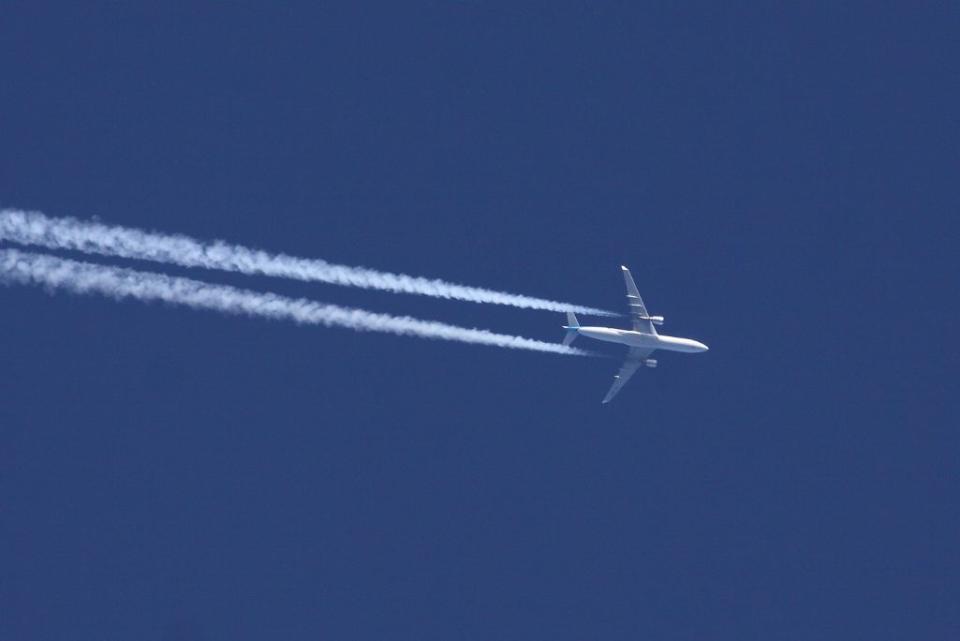Google, Lufthansa and EU Team Up to Measure Climate Impact of Flights

Accurately measuring the climate impact of individual flights has been a thorny issue because the science is inexact. For example, Google Flights last year controversially dropped the inclusion of contrails, the streaking ice clouds that trap heat as they trail aircraft in the sky. They don’t contain CO2, but are believed to have a large effect on a flight’s contribution to global warming.
Critics have argued that Google’s current display of flight emissions greatly underestimate their environmental impact because they exclude contrails. Google has countered that it will include them when it can more accurately measure them.
The European Union Aviation Safety Agency and Google announced Wednesday that they are partnering to develop a reliable framework for measuring the emissions’ impact of flights flown by different airlines, and a way to present these calculations so flyers can make environmentally conscious choices.
As part of this pilot program, the Lufthansa Group agreed to provide data to be used for assessment in these emissions calculations.
“Working partnerships such as this are essential if we are to move forward quickly to a better understanding of how to assess emissions and to provide greater transparency on the environmental impact of aviation for the general public,” said Luc Tytgat, EASA Strategy and Safety Management Director, in a statement. “Such data is only meaningful if it is credible and compiled by an independent authority, such as EASA. We believe this can make an important contribution to informing the traveling public as to which flights may be considered to be greener.”
The partnership will help Google and partners develop its Travel Impact Model, a framework for measuring flight emissions per passenger that’s publicly accessible.
The Travalyst coalition, which includes Amadeus, Booking.com, Expedia Group, Google, Skyscanner, Travelport, Trip.com Group, Tripadvisor and Visa, has been developing that Travel Impact Model. Skyscanner and Google Flights, for example, currently use it to depict the environmental impact of individual flights so consumers can make a green choice — or not.
Google said Travel Impact Model stakeholders, including environmental groups, academics, aviation experts and nonprofits, will help determine methodologies for determining the impact of contrails. In a twist, the Travel Impact Model will transition to a shared governance dynamic, Google said.
Previously, Google drove decisions about the Travel Impact Model. Under the new governance lineup, the stakeholders will share decision-making while Google sees itself as the technology steward.
Get breaking travel news and exclusive hotel, airline, and tourism research and insights at Skift.com.

 Yahoo Finance
Yahoo Finance 